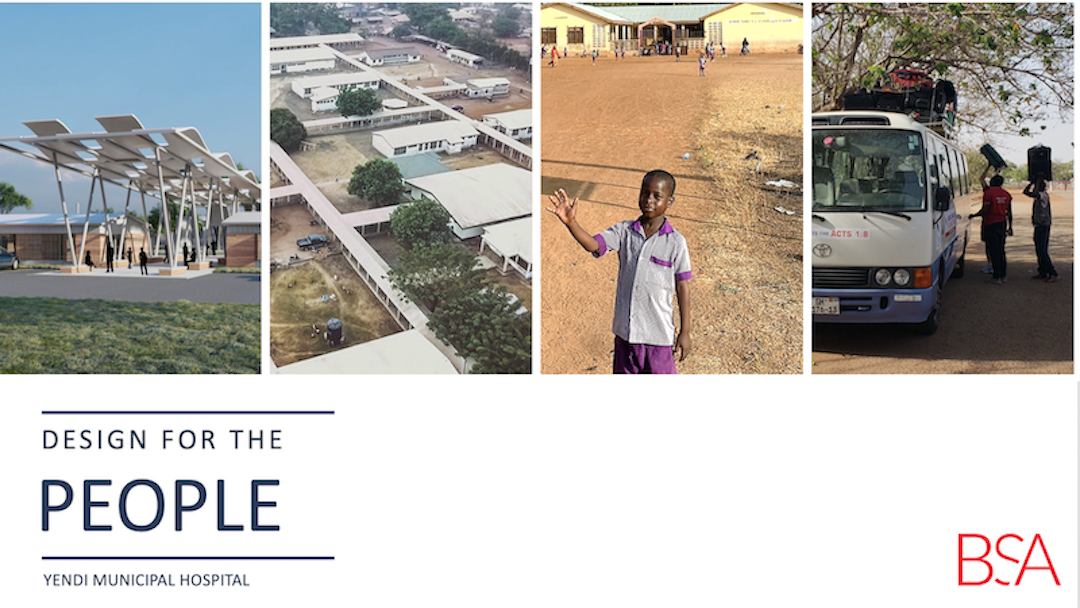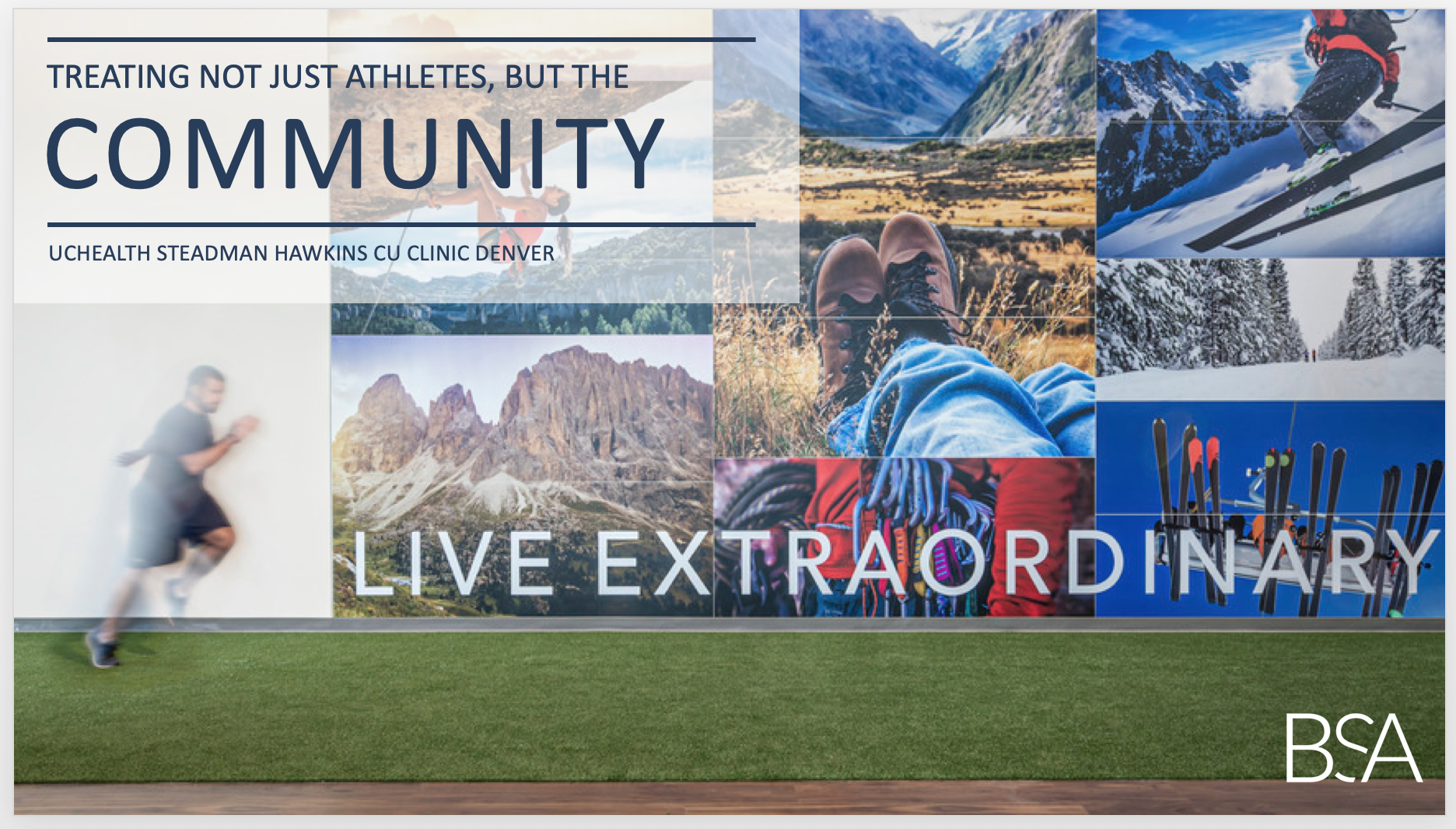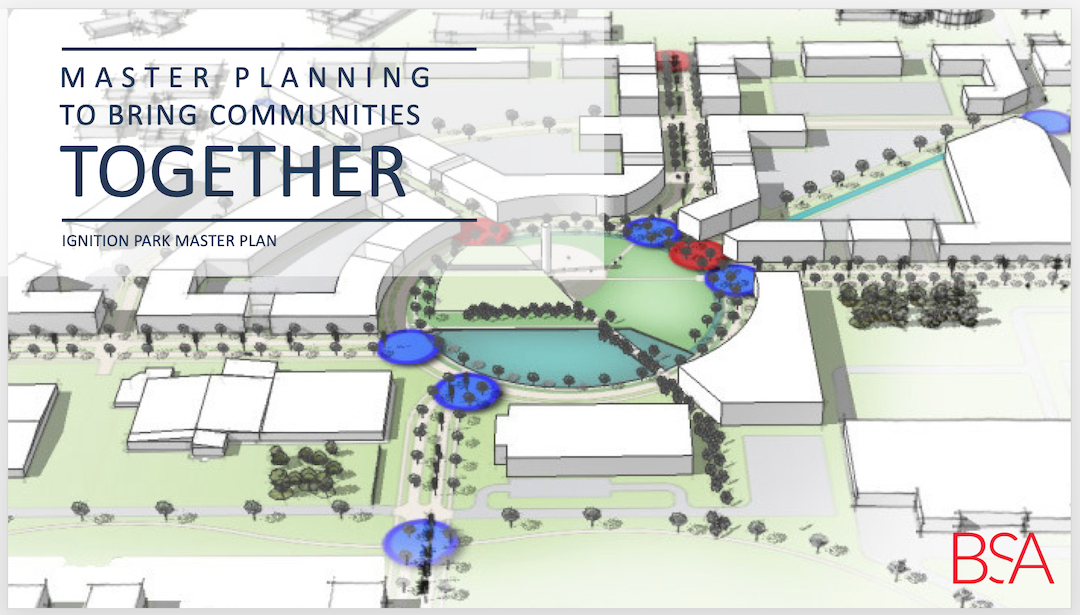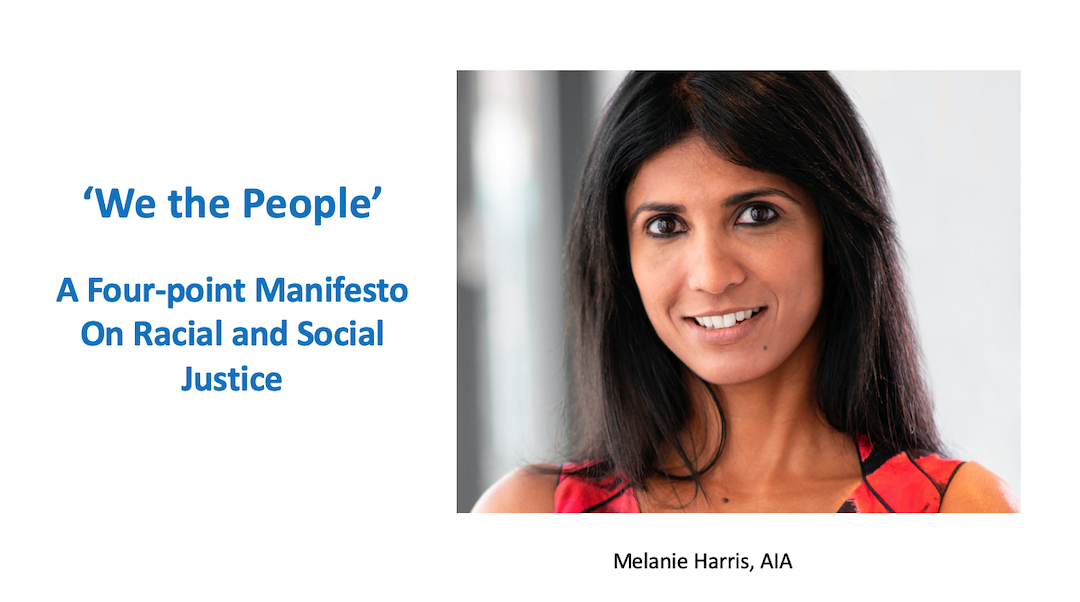I am an architect. I am also a woman of color.
As a brown woman, and now a citizen who emigrated to the United States from India 17 years ago, the recent unrest in our country following the death of George Floyd has made me pause and think about the role of architecture and architects in building a world that not only encourages but demands equity through design.
I was reminded of that day almost two decades ago when I made the 9,000-mile journey from my home in Thiruvananthapuram, the capital of the southwestern state of Kerala, to San Francisco with my younger sister in tow. My mother, who had always been my biggest champion, passed away when I was 15; my father – recently retired from the Indian army – had remarried and was living in San Francisco with my new stepmother and stepsiblings.
As a 19-year-old in charge of a 14-year-old, travelling across continents, I was anxious about all the layovers and connections I had to make, nervous about misplacing the $100 bill my father had entrusted me with, afraid of ordering the wrong meals and drinks on the flight, curious about my new family, but most of all excited about new beginnings. I didn’t stop to consider things like my accent, the color of my skin, the way that I pronounced certain words (my Vs have always sounded like Ws), and my minimal knowledge of American culture.
'I HAD OPPORTUNITIES, AN EDUCATION, A CAREER'
I have been fortunate, even with my differences, to avoid the depth of discrimination so many in this country face. I had opportunities that not everyone does. My parents worked hard to make sure we had comfortable lives and were able to pay for college, even if it meant we had to work hard for scholarships and supplement their contributions with employment while we attended school. Having studied English in schools in India, my transition into American life was smoother than for many who immigrate to this country. I had an education that led me toward a career in architecture, one that is fulfilling and allows great vertical growth. Not everyone is as fortunate.
Even with all the benefits I had, I continued to confront and stand up against the multitude of insidious forms of discrimination – in India and here in the U.S. In India where fairer complexioned women are sought out for marriage, it was the color of my skin. Being naturally darker in complexion, I can still remember the snide comments comparing me to my fairer sister. In India, my independence as a woman was seen as an affront to the patriarchal system that still rears its ugly head. In the U.S., I initially ignored the seemingly small but telling instances of sexism and ageism, later vowing to stand up against it. But I never experienced racism.
As we speak of the systemic racism against minorities in our country, let us consider the true meaning of humanity: our ability to love, show compassion, and use creativity to advance the human race. Every one of us can express this humanity in many different ways. I express mine through my profession.
ARCHITECTURE AS 'A PLACE OF HUMANITY'
Throughout history, the one thing architecture has always represented is a place of humanity. Architects and engineers are tasked with designing spaces that in the very root of their existence strive to provide for those in need of comfort, respite, healing, faith, and justice.
Too often, the true essence of design gets lost or ignored in the milieu. In many communities, disenfranchised people of color are the least served, be it in adequate healthcare facilities and services, housing that they can afford, or educational opportunities. It is time for us to fight for equity.
The profession of architecture uses data, statistics, and information, translating these factors into a creative, visual homage to life on earth. Our profession also takes the basic psychological and safety components of Maslow’s hierarchy – shelter, personal security, resources, and health – and transforms them into love and belonging, esteem, and ultimately self-actualization.
When we deprive people of their basest needs, we are wrenching away their hopes of achieving all the higher needs. Without the feeling of belonging, esteem, and the drive to become our best selves, we can become consumed by an eternal cycle of disenfranchisement and dissolution.
'WE MUST USE OUR VOICES TO EDUCATE AND ADVOCATE'
As architects, we must use our voices to educate, advocate, and demand a say in the future of our world. We are leaving legacies that define a narrative too important to ignore. The buildings we design become vessels of a collective consciousness.
To see architecture in the sum of its parts is paramount. Here’s how we can do that:
1. DESIGN FOR THE PEOPLE
We have been taught to design to the context, a varied array of constraints, and to the site. But let us also start designing to those who use the space. For example, in certain economically impoverished areas, it is important to provide larger waiting areas in clinics than is the industry standard. This allows larger families with siblings and grandparents to attend appointments with the primary patient when childcare is too expensive or not available.
Understanding the people who use the space and the way the space will be used has such value in design, yet it is often overlooked for aesthetics, budget constraints, or schedule demands.

2. EMPOWER THE PEOPLE
We must inspire neighborhoods to take pride in improving their quality of life. Instead of allowing gentrification that forces out a community’s indigenous residents, we must add resources that allow them to invest in the future of their neighbors and their community.
Programs such as urban farms operated and used by the community, sustainable initiatives providing green energy sources at a discount, increased access to education specific to preventive healthcare and well-being, and community art and upgrade programs allowing neighbors to define their surroundings are all great means to accomplish this. This is how self-worth can be nurtured. Architecture is one important tool that can help accomplish this.

3. STAY INVESTED IN THE COMMUNITY
More often than not, architects and designers are removed from the job once the project is complete and occupied. Like doctors’ follow-up visits, we should endeavor to conduct post-occupancy evaluations – particularly in impoverished neighborhoods and on projects that deeply affect the community, such as clinics, hospitals, schools, and housing – and take any necessary corrective action to make sure our buildings serve all the people for whom they were designed, not just owners or clients.

4. STRIVE FOR INCLUSION
We must locate and design accessible public spaces for people of all races and economic standings. Instead of using parks and plazas as a tool to separate, we must see these as opportunities to engage and integrate. Design has the power to address concerns regarding safety and security. We must not allow these concerns to prevent us from doing what is right.
It is our responsibility as architects to empower neighborhoods, those we live in and those we touch through our work. Imagine the collective power of a group that weaves a community’s and a nation’s urban fabric. Let’s understand the importance of established minority neighborhoods. Let’s learn how to work with the local community by providing the proper resources and support to enhance a community and meet its needs. Let’s help every human being achieve his or her best self.

I cannot wait for the day when, regardless of race, sex, gender, or economic status, we all have equal rights to safety, security, a sense of belonging, and self-value. The very first words of our Constitution are “We the People of the United States.” Our country cannot move forward until there is equity for all of its citizens. At the very foundation of our democracy is the right to shape our future for the betterment of all the people. As leaders in the building industry, we have a professional and moral obligation to use our skills and training to achieve this goal, now more than ever.
ABOUT THE AUTHOR: MELANIE HARRIS, AIA
Melanie Harris, AIA (mharris@bsalifestructures.com), is the National Healing Practice Director for BSA LifeStructures, a full-service architecture and engineering firm. She is a graduate of Texas A&M University and when not in Tampa, she travels the world in search of new experiences, unique foods, and architecture.
Related Stories
Mass Timber | Jan 27, 2023
How to set up your next mass timber construction project for success
XL Construction co-founder Dave Beck shares important preconstruction steps for designing and building mass timber buildings.
Sports and Recreational Facilities | Jan 26, 2023
Miami’s motorsport ‘country club’ to build sleek events center
Designed by renowned Italian design firm Pininfarina and with Revuelta as architect, The Event Campus at The Concours Club will be the first and only motorsport-based event campus located within minutes of a major metro area.
Student Housing | Jan 26, 2023
6 ways 'choice architecture' enhances student well-being in residence halls
The environments we build and inhabit shape our lives and the choices we make. NAC Architecture's Lauren Scranton shares six strategies for enhancing well-being in residence halls.
K-12 Schools | Jan 25, 2023
As gun incidents grow, schools have beefed up security significantly in recent years
Recently released federal data shows that U.S. schools have significantly raised security measures in recent years. About two-thirds of public schools now control access to school grounds—not just the building—up from about half in the 2017-18 school year.
AEC Tech Innovation | Jan 24, 2023
ConTech investment weathered last year’s shaky economy
Investment in construction technology (ConTech) hit $5.38 billion last year (less than a 1% falloff compared to 2021) from 228 deals, according to CEMEX Ventures’ estimates. The firm announced its top 50 construction technology startups of 2023.
Sports and Recreational Facilities | Jan 24, 2023
Nashville boasts the largest soccer-specific stadium in the U.S. and Canada
At 30,105 seats and 530,000 sf, GEODIS Park, which opened in 2022, is the largest soccer-specific stadium in the U.S. and Canada. Created by design firms Populous and HASTINGS in collaboration with the Metro Nashville Sports Authority, GEODIS Park serves as the home of the Nashville Soccer Club as well as a venue for performances and events.
Concrete | Jan 24, 2023
Researchers investigate ancient Roman concrete to make durable, lower carbon mortar
Researchers have turned to an ancient Roman concrete recipe to develop more durable concrete that lasts for centuries and can potentially reduce the carbon impact of the built environment.
Architects | Jan 23, 2023
PSMJ report: The fed’s wrecking ball is hitting the private construction sector
Inflation may be starting to show some signs of cooling, but the Fed isn’t backing down anytime soon and the impact is becoming more noticeable in the architecture, engineering, and construction (A/E/C) space. The overall A/E/C outlook continues a downward trend and this is driven largely by the freefall happening in key private-sector markets.
Multifamily Housing | Jan 23, 2023
Long Beach, Calif., office tower converted to market rate multifamily housing
A project to convert an underperforming mid-century office tower in Long Beach, Calif., created badly needed market rate housing with a significantly lowered carbon footprint. The adaptive reuse project, composed of 203,177 sf including parking, created 106 apartment units out of a Class B office building that had been vacant for about 10 years.
Hotel Facilities | Jan 23, 2023
U.S. hotel construction pipeline up 14% to close out 2022
At the end of 2022’s fourth quarter, the U.S. construction pipeline was up 14% by projects and 12% by rooms year-over-year, according to Lodging Econometrics.

















